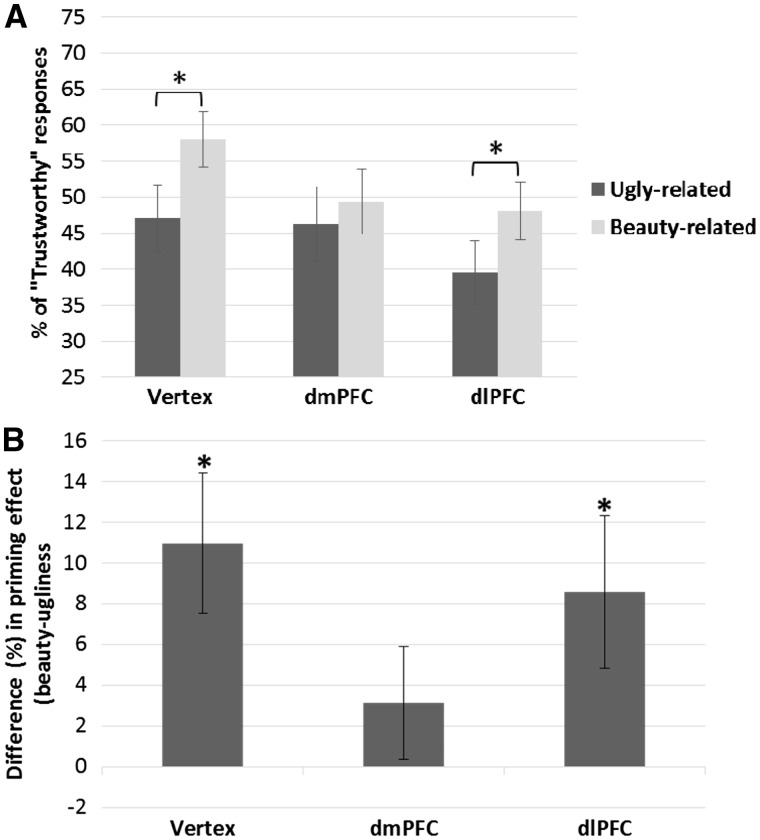Fig. 5.
(A) Percentage of positive responses (i.e., The face is trustworthy) of Experiment 2 as a function of prime (ugliness vs. beauty) and TMS condition (vertex, dmPFC, dlPFC). Similarly to Experiment 1, the Beauty-is-Good stereotype was observed when TMS was delivered over the vertex and over the dlPFC, but not when TMS was delivered over the dmPFC. TMS stimulation of the dlPFC decreased the overall number of positive responses. Error bars indicate ± 1 SEM. Asterisks indicate significant differences in priming effects within each TMS condition. (B) Difference in the percentage of faces classified as trustworthy when faces were preceded by beauty-primes vs. ugliness-primes (i.e., beauty minus ugliness) in Experiment 2. Asterisks indicate a significant difference compared to zero (i.e., no priming effect). Error bars indicate ± 1 SEM.

